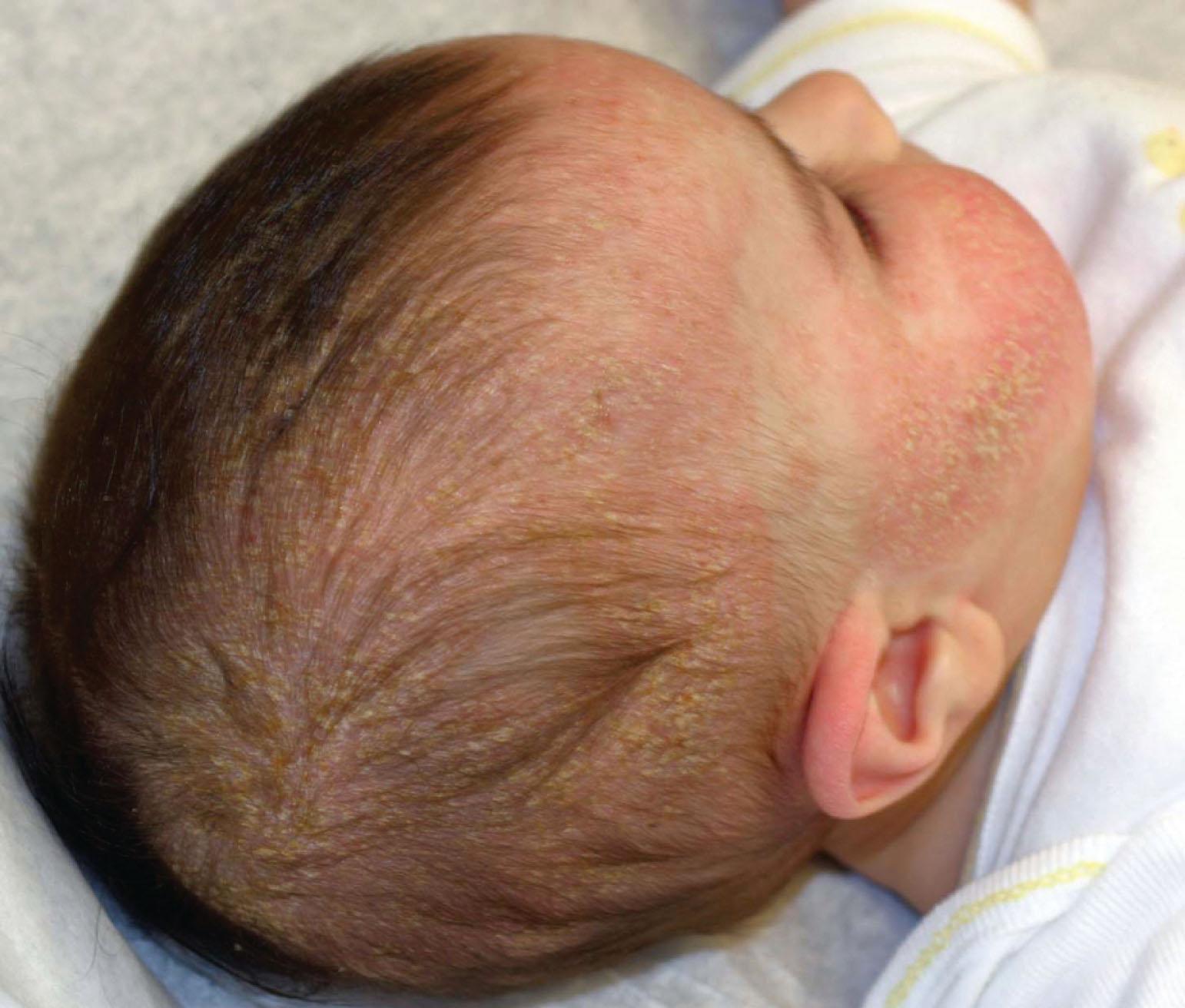Physical Address
304 North Cardinal St.
Dorchester Center, MA 02124
Seborrheic dermatitis is a common, chronic inflammatory disease that has different clinical presentations at different ages. Seborrheic dermatitis classically presents in infants as cradle cap or dermatitis in the intertriginous areas of the axillae, groin, antecubital and popliteal fossae, and umbilicus. It is seen in adolescents as dandruff. The pathogenesis of seborrheic dermatitis is unclear, but it is theorized that there is an abnormal inflammatory response to commensal Malassezia species in sebum-rich areas. Areas prone to seborrheic dermatitis include the scalp, eyebrows, eyelids, nasolabial folds, external auditory canals, and posterior auricular folds.
Seborrheic dermatitis in infants begins during the first month and persists during the first year of life. It is also called cradle cap because of the thick, greasy and waxy, yellow-white scaling and crusting of the scalp ( Fig. 192.1 ). Greasy, scaly, erythematous, nonpruritic patches and plaques may extend to the face and posterior auricular folds, sometimes involving the entire body. Diaper and intertriginous areas can have sharply demarcated, shiny, erythematous patches with minimal scale. Hypopigmentation may persist after the inflammation has faded. The eruption is usually asymptomatic, which helps differentiate it from infantile atopic dermatitis, which is pruritic.

Classic seborrheic dermatitis during adolescence is typically localized to the scalp. The mild form is commonly known as dandruff , a fine, white, dry scaling of the scalp with minor itching. Additional findings of seborrheic dermatitis vary from diffuse, brawny scaling to focal areas of thick, oily, yellow crusts with underlying erythema. The external auditory canals, eyebrows, eyelids, and intertriginous areas may be involved as well. Pruritus may be minimal or severe.
Laboratory studies and imaging studies are not necessary to diagnose seborrheic dermatitis. Fungal cultures and potassium hydroxide studies may be necessary to help differentiate seborrheic dermatitis of the scalp from tinea capitis (see Chapter 98 ).
Become a Clinical Tree membership for Full access and enjoy Unlimited articles
If you are a member. Log in here